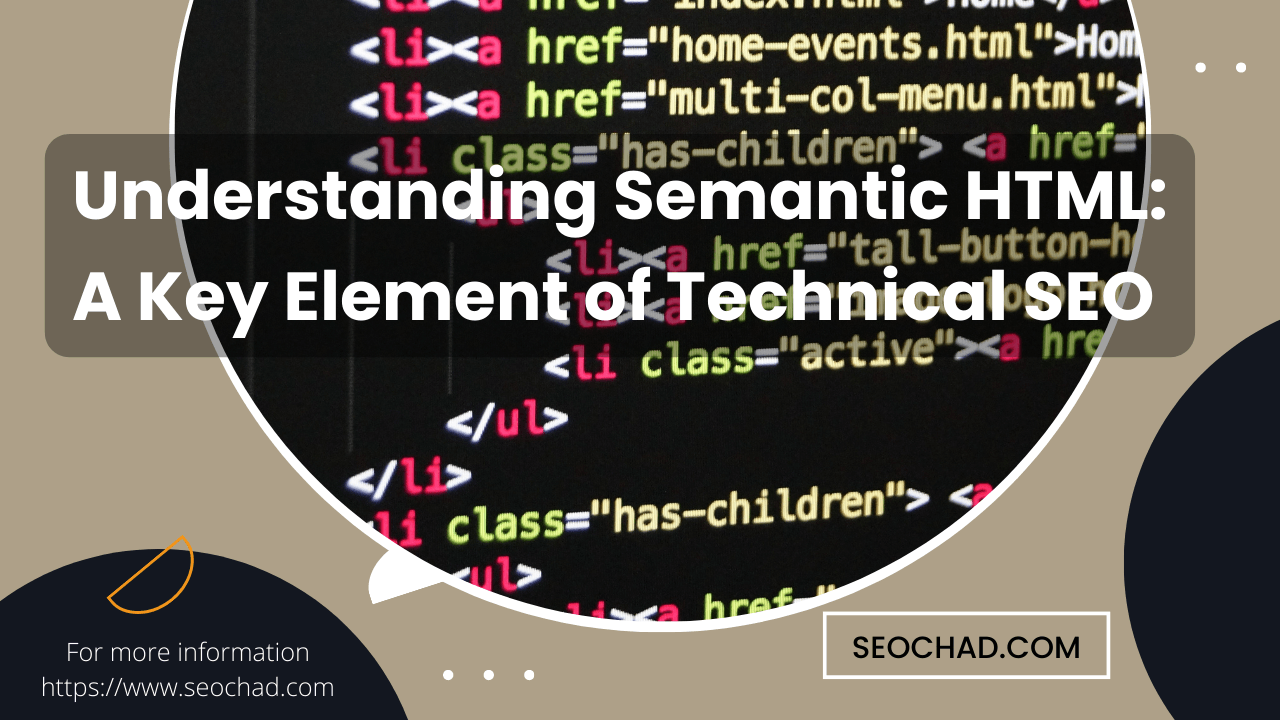Are you ready to unlock the secret behind boosting your website’s search engine rankings? Look no further than semantic HTML! In this blog post, we delve into the world of technical SEO and how understanding it can be a game-changer for your online presence. Whether you’re new to the concept or seeking ways to optimize your website’s performance, join us on this journey as we unravel the power of it and its impact on improving visibility, usability, and overall user experience. Get ready to take control of your website’s destiny with this key element of technical SEO!
Introduction to Semantic HTML
Semantic HTML is a key element of technical SEO because it helps search engines understand the content of a web page. Semantic HTML uses tags and attributes to describe the meaning of the content, rather than its presentation. This makes it easier for search engines to index and rank web pages.
Some common examples of tags are: : Defines a header for a document or section
: Defines a footer for a document or section
: Defines navigation links
: Defines an article
: Defines a section in a document
: Defines content that is related to the main content but not essential to understanding it
Using semantic HTML tags in your web page’s code can help search engines understand the content of your page more easily. This is important for SEO because it helps search engines deliver relevant search results to users.
How Does Semantic HTML Help With SEO?
When it comes to SEO, semantic HTML can be a real game-changer. By definition, semantic HTML is code that gives meaning to the content on a page. This means that search engines can better understand what your pages are about, and as a result, your pages are more likely to rank for relevant keywords.
There are a few key ways in which semantic HTML can help with SEO:
- Semantic HTML5 tags give meaning to your content
- Semantic markup is easier for search engines to read
- Semantic HTML can improve click-through rates from SERPs
- Semantic code can make your site more accessible
What are the Benefits of Using Semantic HTML?
When it comes to technical SEO, one of the most important elements is semantic HTML. Semantic HTML is a form of markup that helps give meaning to the content on a webpage. This can be helpful for both search engines and users, as it can make it easier for search engines to understand the content on a page and provide relevant results, and it can help users better understand what a page is about.
There are many benefits to using semantic HTML, including:
- Improved Search Engine Optimization: As mentioned above, one of the main benefits of semantic HTML is that it can improve your website’s SEO. By using semantic markup, you can help search engines better understand the content on your website and provide more relevant results for users. This can lead to more traffic and higher rankings in search engine results pages (SERPs).
- Better Accessibility: Semantic HTML can also be helpful for users with disabilities, as it can make it easier for them to understand the content on a webpage. When you use semantic markup, you can add extra information that can be read by screen readers and other assistive technologies. This extra information can help users with disabilities understand what a page is about and navigate your website more easily.
- More Readable Code: Semantic HTML generally results in cleaner, more readable code. This can be helpful for both developers and website visitors, as it makes it easier to understand what a page is about and find the information you are looking for.
- Simplified Maintenance: Semantic HTML can also make it easier to update and maintain your website. Using semantic markup makes it easier to quickly find the content you are looking for, and it can help ensure that all of your code is consistent and up-to-date.
How to Implement in Your Website?
Semantic HTML is the process of structuring your code in a way that makes it easy for search engines to understand the meaning and context of your content. When implemented correctly, semantic HTML can help improve your website’s SEO by making it easier for search engines to crawl and index your pages.
There are a few things to keep in mind when implementing semantic HTML on your website:
- Use meaningful tags: When tagging your content, use tags that accurately describe the content. For example, if you have a section of text that is a list of items, tag it as an unordered list (
- Structure your code logically: Your code should be easy to read and understand. Indent nested code so that it is easy to see the hierarchy of your tags. This will also make it easier for search engines to crawling and indexing your pages.
- Use descriptive class and id names: Class and id names should be descriptive and accurately reflect the content they are applied to. For example, if you have a class name “sidebar”, it should be applied to a sidebar element on your page.
- Don’t use too many divs: Using too many divs can create unnecessarily complex code which can be difficult for both humans and search engine crawlers to understand. If possible, try to use other HTML tags such as paragraphs () or headings (-) instead of div s.
- Include metadata: Metadata is information about your content that search engines can easily read and understand. This includes things like page titles, descriptions, and keywords. Including this information in the head section of your HTML can help improve search engine rankings for your website.
Tips and Tricks for Writing Cleaner Code Using Semantic HTML
-Use meaningful element names: Element names should be chosen to describe their purpose on the page, not their visual appearance. For example, use for a page’s header, not
.
-Avoid excessive nesting: Keep your markup as shallow as possible. You should only nest elements one level deep, at most.
-Don’t use divs for everything: Using too many
elements can make your code more difficult to read. Try to use other HTML5 elements where appropriate, such as , , and .
-Use built-in semantics: Whenever possible, take advantage of the semantics built into HTML5, such as the new input types and attributes.
Best Practices for Structuring Content with Semantic HTML
There are a number of best practices to keep in mind when structuring your content with semantic HTML. First and foremost, use clear and concise titles that accurately describe the topic of your page. Second, use proper heading tags (H1-H6) to structure your content in a way that is easy for readers to scan and digest. Third, use lists (ordered or unordered) to break up your content and make it easier to read. Fourth, use strong tag to emphasize key points and text within your content. Fifth, use paragraphs to break up large blocks of text into digestible chunks. Finally, use the alt attribute on all images to provide additional context for screen reader users. By following these best practices, you can ensure that your content is structured in a way that is both semantic and accessible.
Conclusion
As you can see, when it comes to technical SEO, semantic HTML is an essential element. Developing a thorough understanding of how best to use it in order to create more effective and efficient webpages can help your website stand out from the competition. Applying the principles of semantic HTML can also improve the user experience for visitors to your site, increasing engagement and potentially leading to higher search engine rankings as well. With some practice and dedication, mastering the art of semantic HTML will undoubtedly give you a leg up on other websites competing for attention on the web.




